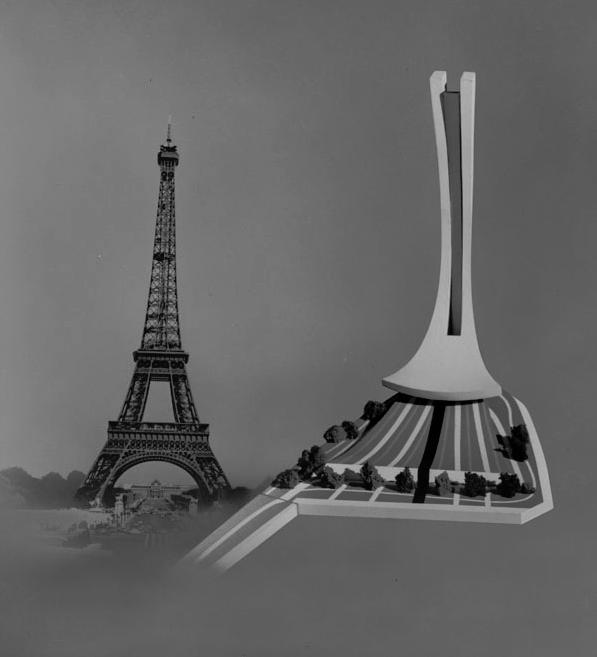
Photo credit © National Archives of Canada
|
THE MONTRÉAL-PARIS MONUMENT... OR THE
PARIS-MONTRÉAL TOWER by Bruno Paul Stenson, M.A. Many an international exhibition has had a building which stood out and became the symbols of those exhibitions. The first such exhibition -- in London in 1851 -- was held in what could be called a giant greenhouse. The building was christened the Crystal Palace and the exhibition nicknamed the Crystal Palace Exhibition. In 1889 Paris hosted an international exhibition for which it built the Eiffel Tower. Montréal was to follow in this tradition with a tower of its own. Jean Drapeau, then mayor of Montréal, had been trying to build a tower for his city for some time. There was even a plan afoot to build a tower atop Mount Royal. When Expo came his way, Drapeau saw a chance to build his tower, a celebration of the historical and cultural ties between Montréal and Paris. To be financed by those two cities to the tune of $20,000,000, the tower was to be built at the downriver (easternmost) tip of Île Ste-Hélène. Symbolically, mark the 325th anniversary of the city of Montréal, the tower was to be 325 metres high, which would have made it second only to the Empire State Building in height. Getting to the top of the tower would have been done via eight to ten two- and three-deck elevators and escalators. The view from the top would have spread out for 50 miles and been high enough to look over Mount Royal. Fountains were planned for its base, and a restaurant was to be located inside. In the end, the tower was never built. Paris had its presence in the French Pavilion instead, and Montréal was not represented at Expo at all. Interestingly, the tower proposed for Expo 67 looks exactly like the tower Jean Drapeau did eventually get: the mast of Montréal's Olympic Stadium. |

